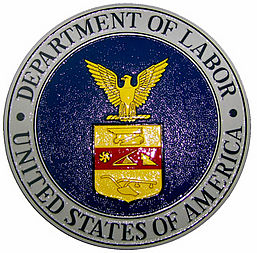“Heads I win, tails you lose / to the never mind / when to draw the line”
– “Draw the Line ” Aerosmith (1977)
” Aerosmith (1977)
The Tax Court continues to take a page from Steven Tyler’s songbook when it comes to property lines and conservation easements. In Bosque Canyon Ranch, L.P. v. Commissioner, the Tax Court rejected two related partnerships’ deductions for the donation of conservation easements. Among the shortcomings the Court found with the partnerships’ donations was a deed provision permitting “modifications to the boundaries between the Homesite parcels.” The Homesite parcels were not subject to the conservation restrictions placed over the remainder of the development property.
 The potential post-donation modifications to the Homesite parcels were subject to the approval (within reasonable judgment) of the North American Land Trust; could not affect the exterior boundaries of the property subject to the easement; and the overall property subject to the easements could not be decreased. Despite these limitations, the Court, following Belk v. Commissioner, 140 T.C. 1 (2013), found that because the potential boundary modifications were in place at the time of the donation, the restrictions on the use of the property were not granted in perpetuity in violation of IRC 170(h)(2)(C).
The potential post-donation modifications to the Homesite parcels were subject to the approval (within reasonable judgment) of the North American Land Trust; could not affect the exterior boundaries of the property subject to the easement; and the overall property subject to the easements could not be decreased. Despite these limitations, the Court, following Belk v. Commissioner, 140 T.C. 1 (2013), found that because the potential boundary modifications were in place at the time of the donation, the restrictions on the use of the property were not granted in perpetuity in violation of IRC 170(h)(2)(C).
The Belk court found that the perpetual donation requirement of IRC 170(h)(2)(C) was violated by a deed allowing the substitution of property subject to the original easement for continguous property of equal area and value after the donation of the easement. The Belk court seemed to be concerned with its ability to identify the specific real property interest subject to the easement at the date the easement was granted. Presumably, the Court felt it could not do that because the potential substitution of adjacent property could change the boundaries of the burdened parcel at any time. And because the specific real property interest had not been identified upon donation, it had not been burdened in perpetuity.
The Bosque Canyon opinion does not provide the detailed deed language that the Belk opinion did, but it does describe the deed as forbidding a decrease in “the overall property subject to the easement” and changes in the “exterior boundaries of the property subject to the easement.” It also suggests that the boundary changes only occur between unburdened parcels (the Homesite lots). These deed provisions – at least as characterized by the court – seem to be a bit different from those in Belk.
Under the Bosque Canyon provisions there could be no change in the borders of the burdened parcel, no diminution of the property subject to the easement and apparently no change in or substitution of property not originally identified. It seems that the Bosque Canyon deeds were limited to redrawing internal boundary lines between unburdened parcels in the same development that included the conservation easement.
If that is the case, then does the deed language in Bosque Canyon really raise the same identification of restricted real property interest subject to the conservation easement issue that concerned the Court in Belk? Is the redrawing of these lines of any real consequence to the identification of a real property interest subject to perpetual protection?
Unfortunately, the Court took issue with much more than the deed modifications in Bosque Canyon (which we will discuss in a future post) so the prospect of appellate review on this discreet deed modification issue is slim. It seems unlikely that the Tax Court intends to create a “heads I win/tails you lose” situation when it comes to deed modifications in conservation easement cases. Nonetheless, Belk might warrant a closer look if it is going to continue to guide the Court’s interpretation of IRC 170(h)(2)(C).
Read the opinion here: Bosque Canyon Ranch L.P., v. Commissioner, TC-Memo. 2015-130
 On November 22, 2016, U.S. District Judge Amos L. Mazzant granted a nationwide preliminary injunction in favor of the 21 states and more than 50 business groups that sued to enjoin the new Fair Labor and Standards Act (“FLSA”) overtime rule that would increase the minimum salary level for exempt employees from $455 per week ($23,660 annually) to $921 per week ($47,982 annually). The new rule, issued under an executive order of the President, had an effective date of December 1, 2016 and would have required employers to pay overtime to employees who worked more 40 hours per week and were salaried at less than $921 per week or $47,982 annually. Those rules will not go into effect because of this order.
On November 22, 2016, U.S. District Judge Amos L. Mazzant granted a nationwide preliminary injunction in favor of the 21 states and more than 50 business groups that sued to enjoin the new Fair Labor and Standards Act (“FLSA”) overtime rule that would increase the minimum salary level for exempt employees from $455 per week ($23,660 annually) to $921 per week ($47,982 annually). The new rule, issued under an executive order of the President, had an effective date of December 1, 2016 and would have required employers to pay overtime to employees who worked more 40 hours per week and were salaried at less than $921 per week or $47,982 annually. Those rules will not go into effect because of this order.

